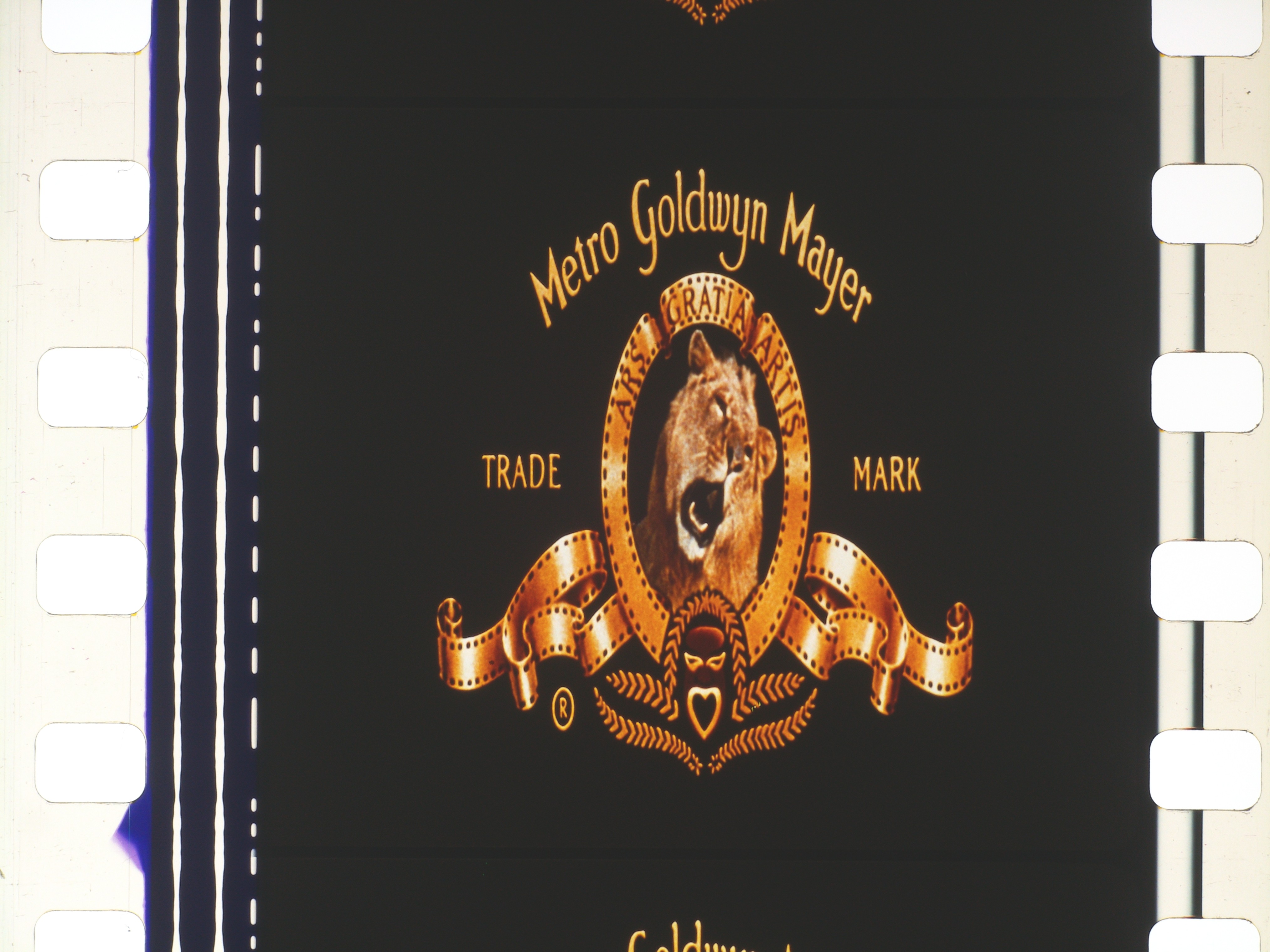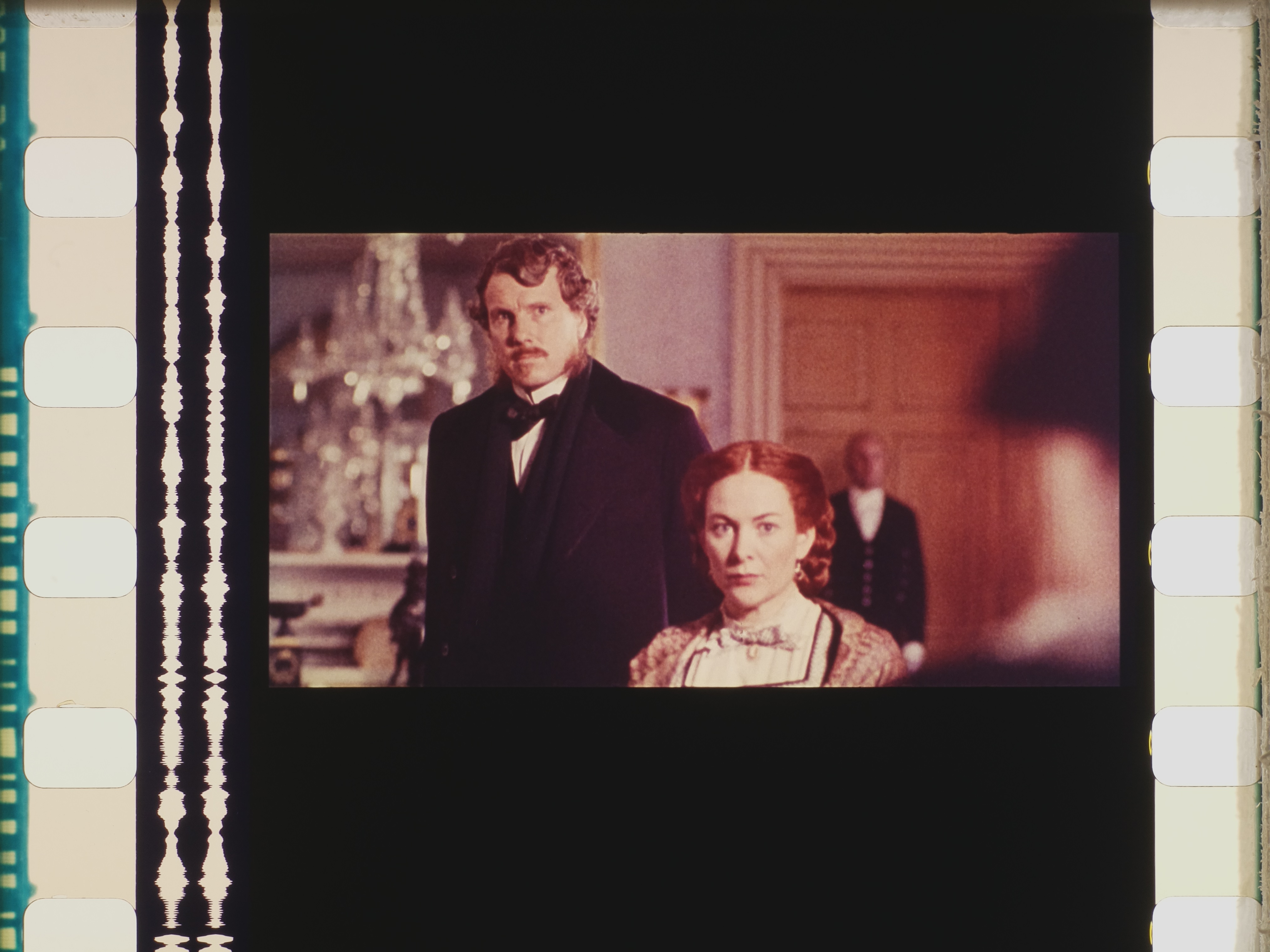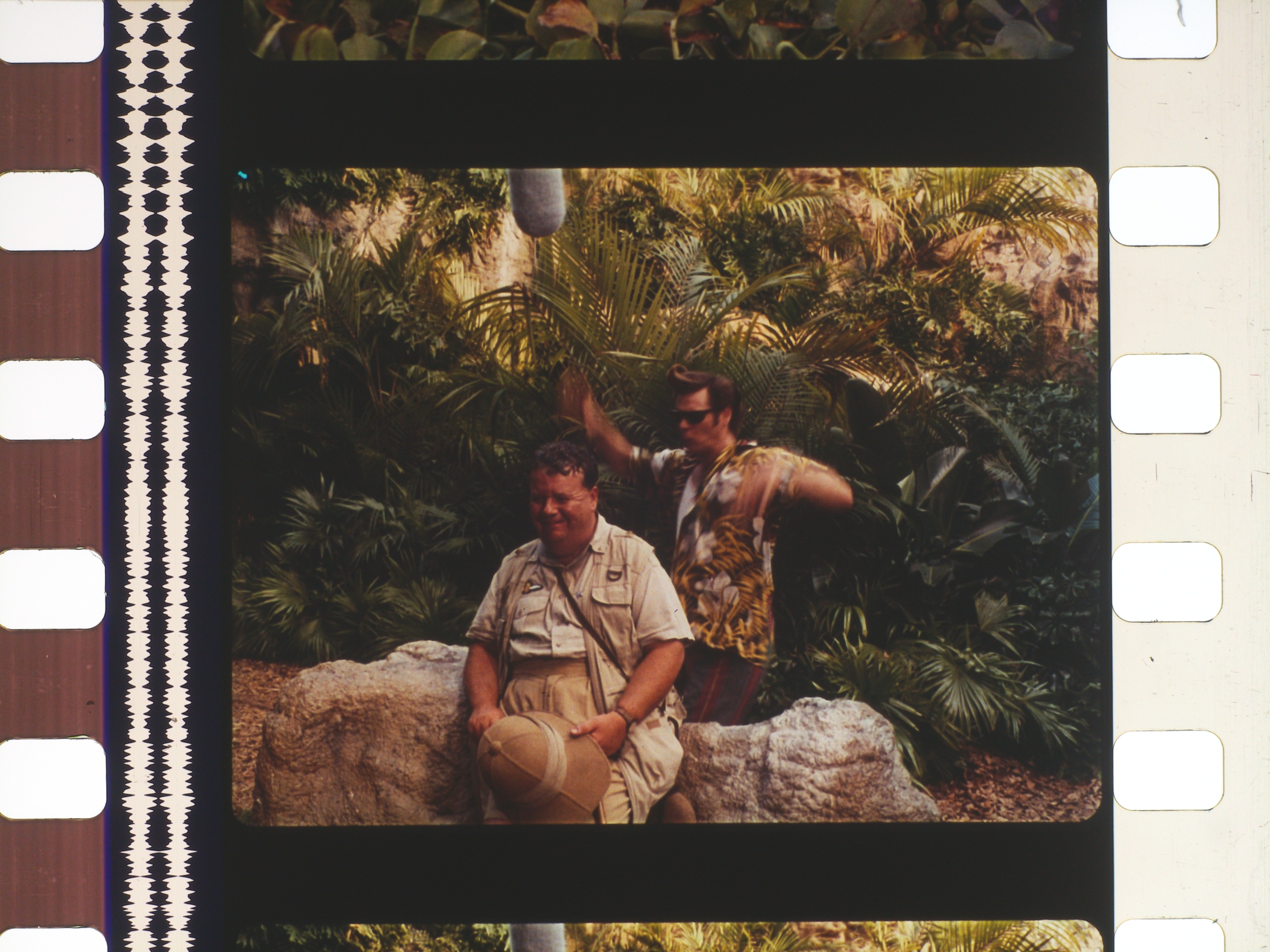Table of Contents
Scope
When you look at a “scope” film you see a picture that has been imprinted using an anamorphic lens. Such a lens stretches the picture on its vertical axis to a ratio of 2:1. When you directly look at a “scope” film you the stretching is very apparent.
If you use a similar anamorphic lens on the projector, the light goes the other way around and it will do the reverse effect, it will squeeze the vertical axis to half the size, restoring the picture to what the original subject looked like.
A full usable area of a 35mm film frame is 24.9mm width by 18.7mm height (about 4:3 ratio), but the analog audio track consumes 3.9mm of that width which leaves only 21mm x 18.7mm (about 1.17:1 ratio). If you squeeze the height of a picture by 2 then you're actual doubling the ratio, that's when you have something close to a 2.35:1 aspect ratio:
Flat Hard Matte
But sometimes the movie is printed flat (not stretched) like in this flat hard matte.
It's called hard matte because the studio has put black bars on top and bottom, it usually reflects the standard ratio of a movie theater, which is a ratio of 1.85:1 (US) or 1.65:1 (Europe)….
Open Matte
But often you will see a flat picture taking the full height of a frame like this one:
In this case the theater projectionist is expected to place a matte to its projector, one that will crop the picture to the usual 1.85:1 ratio of his theater, such a matte is usually a bit out of focus and that's why it gained the name “soft matte” with its blurry borders compared to the clearer hard matte that you saw earlier. (Note: I optimized the rectangles to their maximum, but in real life, tv studios use margins to insure the framing stays in the picture, so they cut it even a tad smaller, cutting a little bit more than what I show here) If you try to capture this picture for a widescreen tv (16:9) you'll have to cut a lot of the picture to make it fit.
Even the old standard TV ratio (4:3) won't be able to show all of the picture that is present on the film. When I scan a movie trailer, I adapt to the picture that is present on film, and when that picture is flat and has a ratio that is lower than 4:3 I call it an open matte transfer. You might be asking “why is it the case?” or “why do they make prints with a bigger picture than intended?”. It's simple, it's just because the camera they used fills the whole area of the film even if they intend to use only a portion of it. Adding a hard matte over it requires some effort that is not mandatory because the projectionnists will do it anyway




